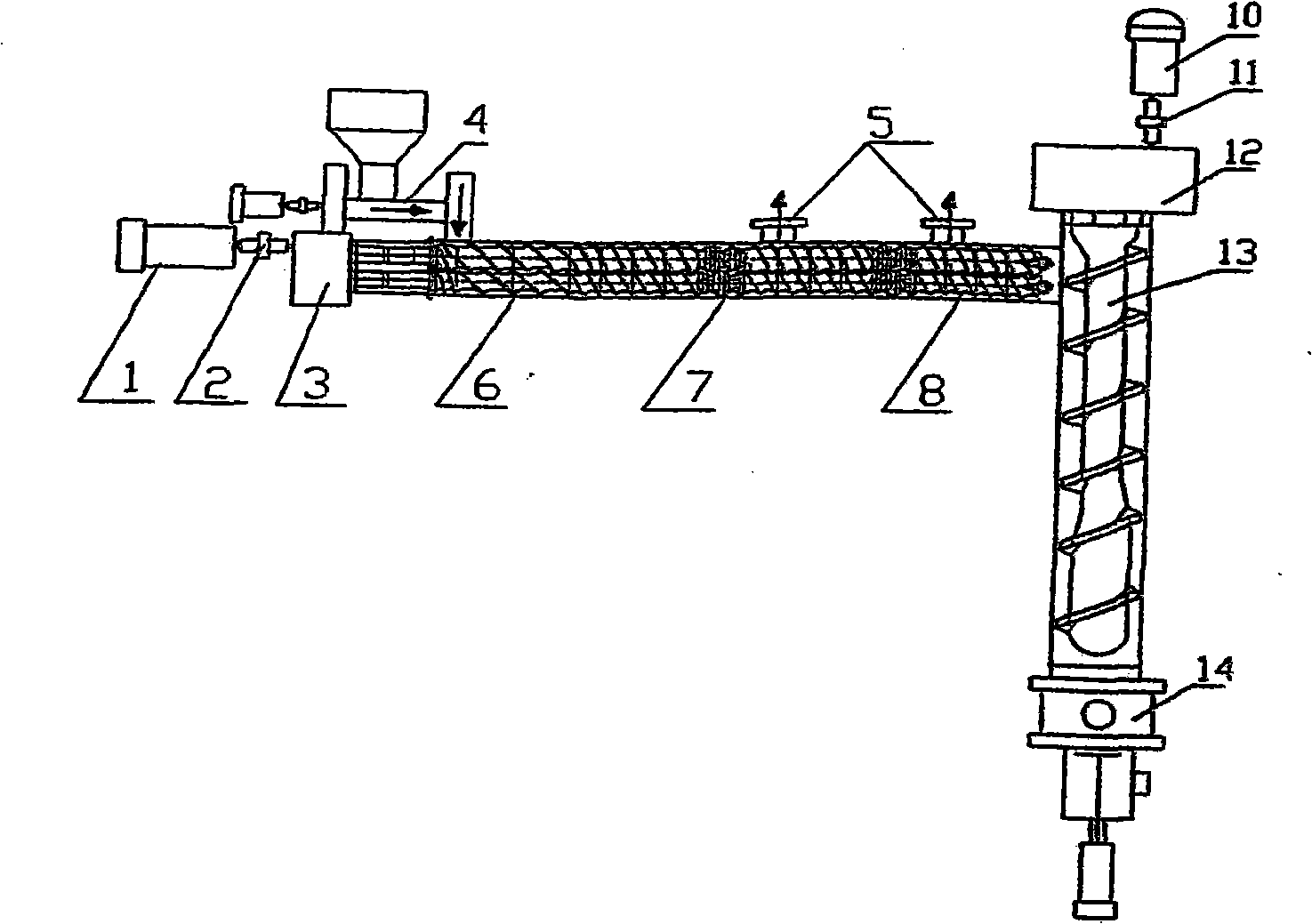Production equipment of non-woven fabric compound economic master batch
A technology for production equipment and non-woven fabrics, applied in the field of production equipment for non-woven composite economic masterbatches, can solve the problems of extremely high production process requirements, long material residence time, time-consuming and laborious, etc., to reduce material costs and save money. energy effect
- Summary
- Abstract
- Description
- Claims
- Application Information
AI Technical Summary
Problems solved by technology
Method used
Image
Examples
Embodiment 1
[0025] 1. Preparation
[0026] Weigh 15kg of polypropylene resin with a melting index of 90, 8kg of polypropylene resin with a melting index of 3, 60kg of nano-scale activated calcium carbonate, 9kg of polyethylene wax, 0.6kg of composite antioxidant, 2kg of zinc stearate, titanate 2kg, white oil 1.7kg, rutile titanium dioxide 1.7kg.
[0027] 2. Ingredients
[0028] Put the above-mentioned raw materials in a stirring container according to the proportion, and stir and mix evenly.
[0029] 3. Forming
[0030] Send the well-mixed compound into the twin-screw extruder to make it fully mixed, melted, dispersed and extruded. During this process, the temperature is controlled by circulating water.
[0031] 4. Granulation
[0032] The molded product extruded by the twin-screw extruder is sent to the single-screw extruder, and the finished non-woven fabric is obtained through melt extrusion, pelletizing, and vibrating sieve screening, and can be packaged.
Embodiment 2
[0034] 1. Preparation
[0035] Weigh 15kg of polypropylene resin with a melting index of 60, 8kg of polypropylene resin with a melting index of 30, 60kg of nano-scale activated calcium carbonate, 9kg of polyethylene wax, 0.6kg of composite antioxidant, 2kg of zinc stearate, titanate Coupling agent 2kg, white oil 1.7kg, rutile titanium dioxide 1.7kg.
[0036] The rest are the same as Example 1.
[0037] The above production process uses a stepped screw extruder, its structure is as follows figure 1 shown. The stepped screw extruder consists of a first-stage twin-screw extruder and a second-stage single-screw extruder. The first-stage twin-screw extruder and the second-stage single-screw extruder are arranged in a "T" shape, and the outlet of the first-stage twin-screw extruder is connected to the inlet of the second-stage single-screw extruder. The material ends are connected.
[0038] The first-stage twin-screw extruder is mainly composed of a driving motor I1, a coupling...
PUM
 Login to View More
Login to View More Abstract
Description
Claims
Application Information
 Login to View More
Login to View More - R&D
- Intellectual Property
- Life Sciences
- Materials
- Tech Scout
- Unparalleled Data Quality
- Higher Quality Content
- 60% Fewer Hallucinations
Browse by: Latest US Patents, China's latest patents, Technical Efficacy Thesaurus, Application Domain, Technology Topic, Popular Technical Reports.
© 2025 PatSnap. All rights reserved.Legal|Privacy policy|Modern Slavery Act Transparency Statement|Sitemap|About US| Contact US: help@patsnap.com



